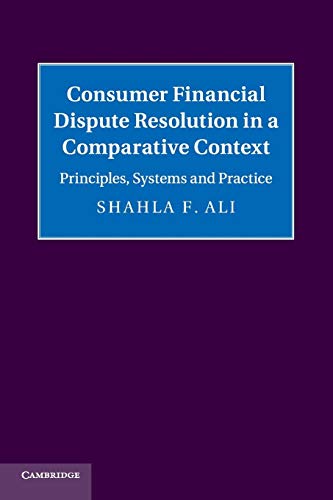Description
Nearly all major global financial centres have developed systems of consumer financial dispute resolution. Such systems aim to assist parties to resolve a growing number of monetary disputes with financial institutions. How governments and self-regulatory organizations design and administer financial dispute resolution mechanisms in the context of increasingly turbulent financial markets is a new area for research and practice. Consumer Financial Dispute Resolution in a Comparative Context presents comparative research about the development and design of these mechanisms in East Asia, North America and Europe. Using a comparative methodology and drawing on empirical findings from a multi-jurisdictional survey, Shahla Ali examines the emergence of global principles that influence the design of financial dispute resolution models, considers the structural variations between the ombuds and arbitration systems and offers practical proposals for reform.
- Provides a comprehensive review of dispute resolution approaches, thereby helping the reader to gain familiarity with the spectrum of options available to address consumer financial disputes
- Identifies best practices in financial dispute resolution through comparative analysis of mechanisms around the world
- Synthesizes findings in the form of law and policy recommendations
Table of Contents
Introduction
Part I. Principles:
1. Principles of consumer financial dispute resolution in a global context
Part II. Ombuds Systems:
2. Financial dispute resolution in the United Kingdom
3. Financial dispute resolution in Australia
4. Financial dispute resolution in Japan
Part III. Arbitration Systems:
5. Financial dispute resolution in the United States
6. Financial dispute resolution in Singapore
7. Financial dispute resolution in Hong Kong
8. Emerging systems: financial dispute resolution in China
Part IV. Practice:
9. Synthesizing lessons learned and policy recommendations
Conclusion: the way forward.






